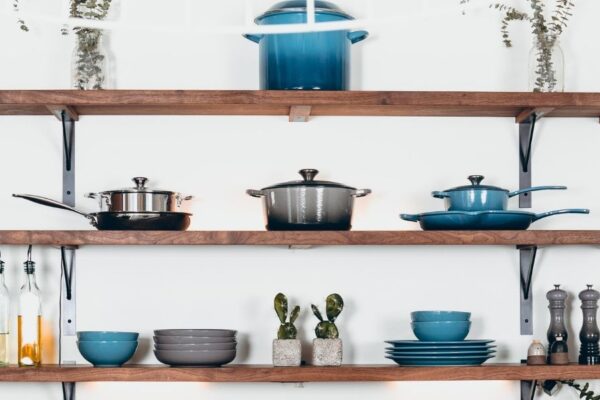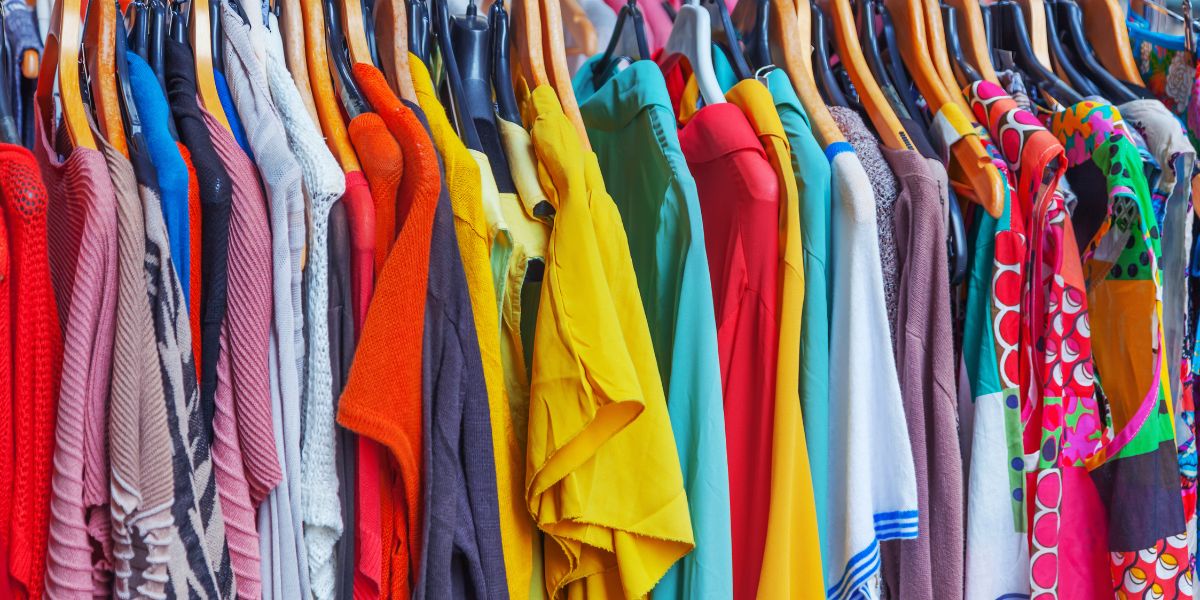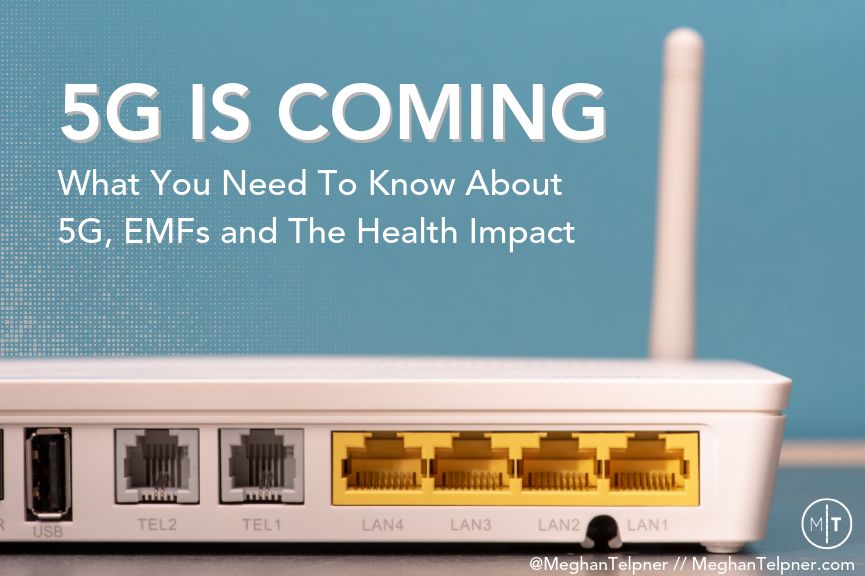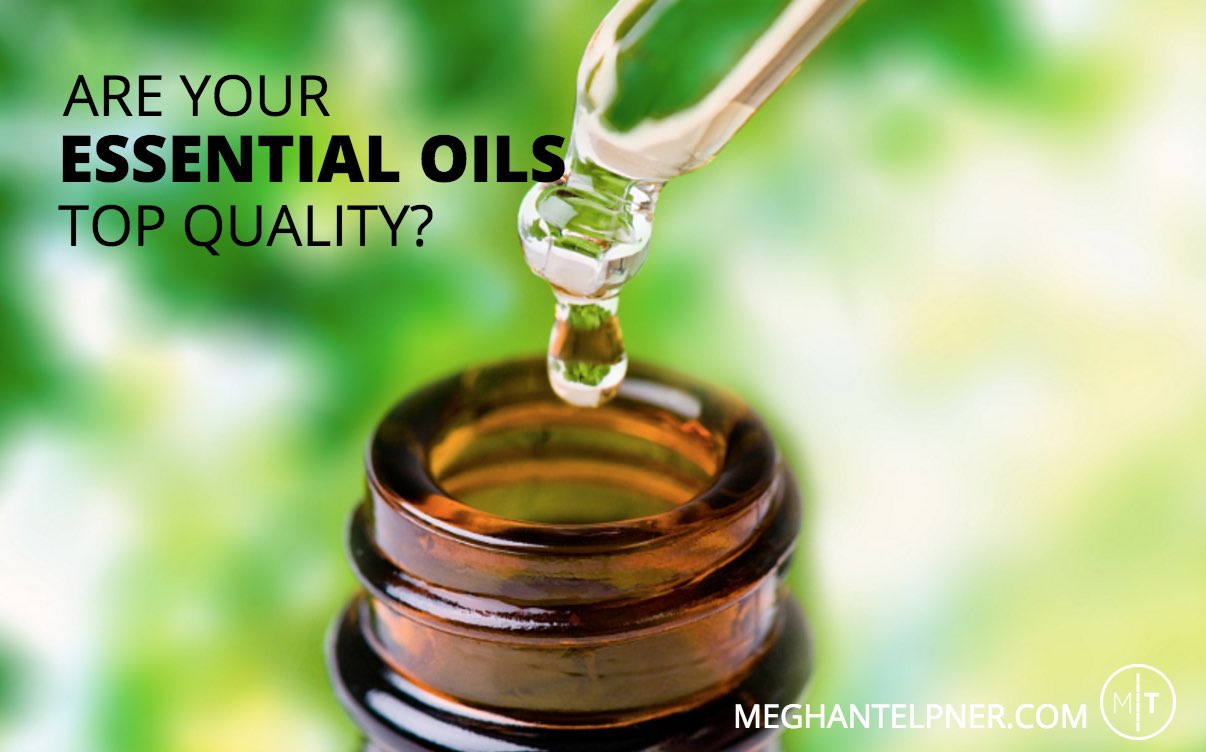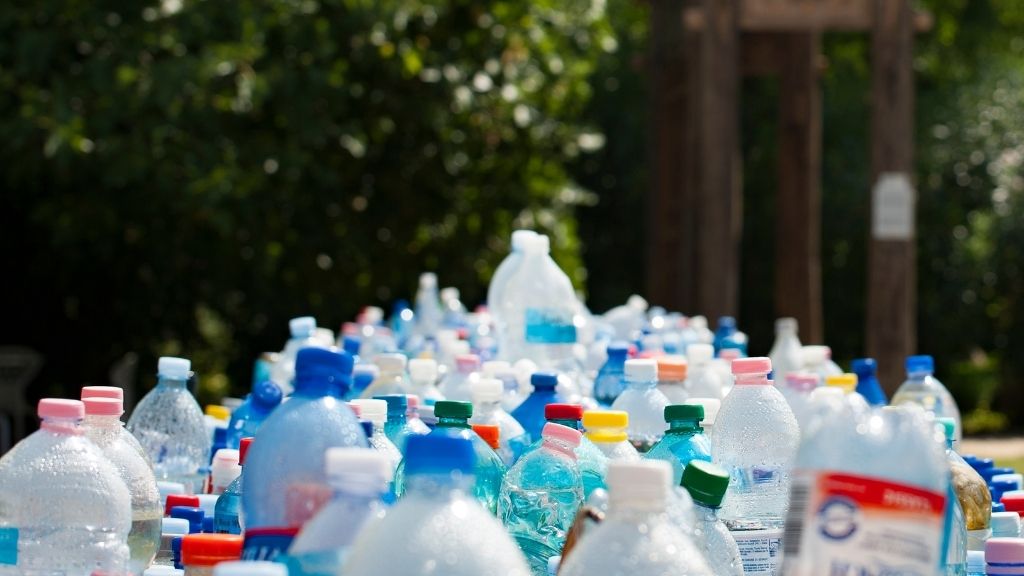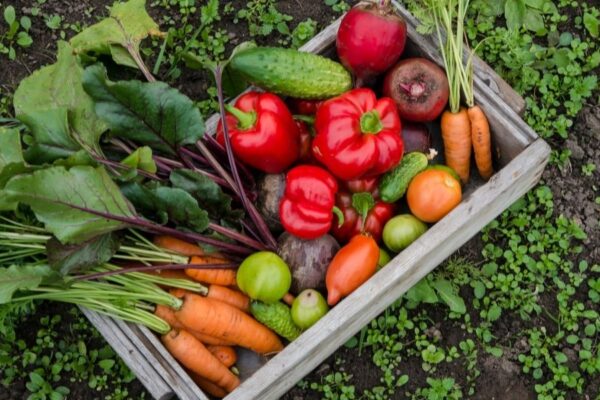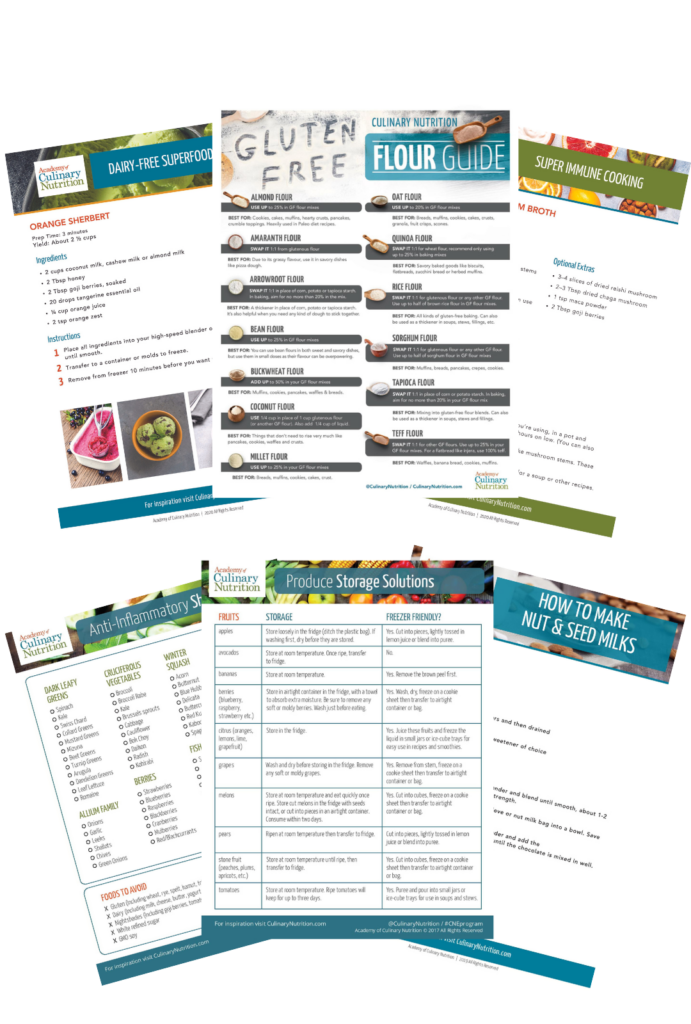Your Guide To Healthy Cookware Options
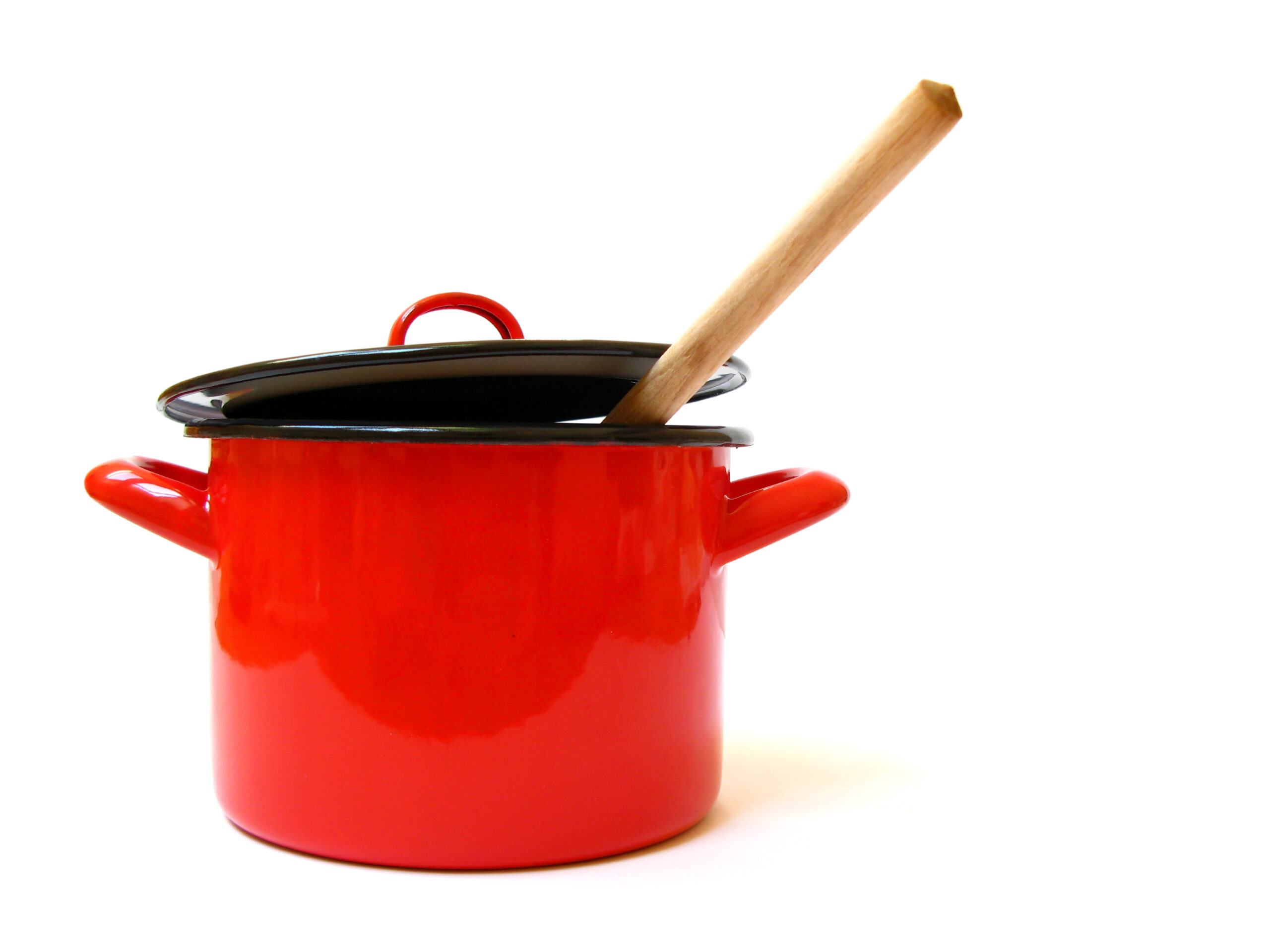
So now your pots and pans can be harmful for you, too? We have to worry about finding healthy cookware options on top of everything else?
Thankfully, safe and healthy cookware is something we can find – it simply is something we need to think about, prioritize, decide upon, purchase and use. It’s important and easier to do than you might think.
Not All cookware is Created Equally
Many materials that companies use to formulate cookware aren’t inert. They release compounds that interfere with our health and can have negative consequences.
Non-Stick Cookware
Non-stick pots and pans (all the rage when they were first invented and now very difficult to escape) are leaching carcinogenic toxins into the foods you cook in them. They were never designed for high-heat cooking, but last I checked, most of us aren’t cooking on low heat. Heat is heat and if we want to cook our food, we need heat.
As nice as it is to not have your pancakes stick, it’s not worth the health risks once that mystery coating starts leaching into your breakfast. Non-stick pans are coated with polytetrafluoroetheylene (PTFE), also known as Teflon. When these pots and pans reach high temperatures, they release toxic fumes that have been known to cause flu-like symptoms in humans and even kill pet birds. Teflon, made by DuPont, has been sued for hundreds of millions of dollars as the chemicals have been linked to birth defects.
“Perfluoro-octanoic acid (PFOA), an ingredient of Teflon and also known as ‘C-8’, is a suspected carcinogen now found in humans, other animals and plants in the US, Europe and Asia. PFOA is very persistent. Released into the environment it looks as if it will take literally millions of years to biodegrade. The company ‘3M’ (which once manufactured PFOA) found that it took 4.4 years for just half of it to be excreted from workers’ bodies.”(Source).
They are calling Teflon gas the new DDT.
No amount is okay. And for more on this topic, please read Slow Death By Rubber Duck.
Want to learn more? Join us for Healthy at Home – a life-changing course.
Aluminum Cookware
Aluminum cookware is popular for conducting heat quickly, but evidence indicates aluminum can leach into our food as we cook – and this migration accelerates when we use acidic foods like tomatoes and citrus. Excess amounts of aluminum in the body have been linked to neurological diseases like Alzheimer’s, dementia, Parkinson’s, and multiple sclerosis. Additional studies found aluminum can leach other metals like lead, cadmium, and arsenic.
You can also find anodized and hard-anodized aluminum cookware. During the anodizing process, manufacturers use acid and an electric current to create a layer of aluminum oxide on the surface of pots and pans. This layer is thick and doesn’t peel or chip. Hard anodized aluminum cookware is a safer option than regular aluminum.
Copper Cookware
Copper cookware is certainly beautiful to look at and like aluminum, it conducts heat well. Unfortunately, copper can migrate into our food from the pans and accumulation of it can cause a burden on the liver and brain, gastrointestinal symptoms, and damage to our DNA. Most copper pots and pans on the market are lined with stainless steel, tin, nickel, or a non-stick coating. Copper pots lined with stainless steel are a safer option than the other coatings that may scratch off. If you have old copper pots passed down from elderly relatives, it’s best to use them for decoration only.
With all of the better options out there, hard-anodized aluminum and copper aren’t our first choices.
Responsibly Dispose Of Your Old Cookware
Given that the chemicals in Teflon are persistent (we’re talking millions of years), the landfill is not an option. It is your obligation to responsibly dispose of your old coated cookware (and rice cookers, and roasting pans, and muffin tins etc.). Finding where and how to dispose of these pans is a growing problem, but your best bet is to try the following:
- Curbside toxic pick-up. More on that here.
- Scrap metal yard. These places are typically equipped to recycle metal. And if you feel bad taking these toxic pans to the people who work there, we can all hope their employers are taking the responsible steps to ensure the health and safety of their employees.
- Mail it away. Some companies offer a mail-in option to discard of your old pans. Do your digging. It is YOUR responsibility to ensure their safe and responsible disposal.
Now that you’ve responsibly disposed of all your non-stick pans, you may be wondering: What the heck should you replace them with? It seems like every day there’s a new “eco-friendly” cookware brand with sci-fi-like descriptions and mystery coatings. How do you choose a healthy cookware pan that’s right for you (not to mention the environment?)
Eco-friendly and healthy Cookware Options
Option 1: Cast Iron + Enameled Cast Iron Cookware
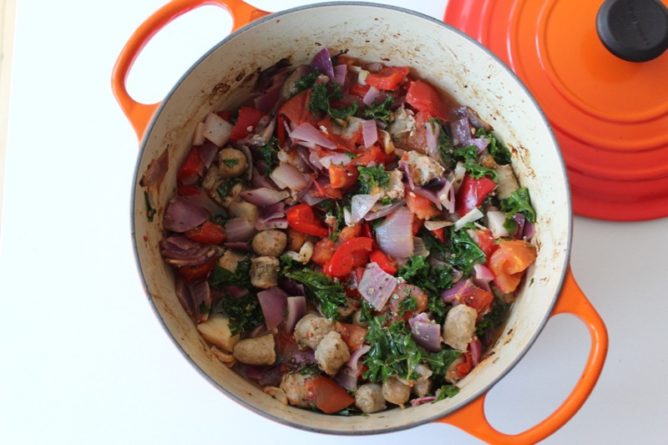
Cast iron is a classic. It’s heavy and will require seasoning (i.e. oiling and baking) between uses, but it has all-natural non-stick capabilities and ups the iron content of your food. If you can get over the sticker shock, enameled cast iron pans combine the benefits of cast iron with easy cleanup. We’re talking heirloom here. Consider this as a lifetime investment and something your children’s children will surely by vying for.
Learn more about using and maintaining cast iron pans here.
Price point: High for enameled cast iron, much lower for regular cast iron.
It’s for you if: You’re shopping for top quality heirloom pieces that are sturdy, safe and tried and tested. If a full set is out of your price range, get one or two pieces in the size you use most often. Who says your soup pot needs to match your frying pan?
Pros
- Durable
- Affordable
- Able to retain heat well and handle high heat
- Free of PFTE and PFOA
- Easy to transition from stovetop to oven to table (they’re great for one-pot meals!)
- Simple to clean and season
- May help reduce iron deficiency anemia in adults and children
We have a full guide to using cast iron for you to check out!
Cons
- Very heavy
- Are a source of iron, so you’ll want to be mindful if you aren’t iron deficient (and acidic foods will cause more iron to leach from the pan)
- You need to season them regularly so they work more effectively
- Susceptible to rust if not cared for properly
- Expensive (Enameled Cast Iron)
Brands We Recommend
Option 2: Stainless Steel + Titanium Cookware
If you’re looking for something that’s low risk to both your health and budget, stainless steel is a good bet. According to the Environmental Working Group, stainless steel pans are a good alternative to their non-stick counterparts and brown foods better than Teflon pans. However, there is a risk with stainless steel cookware that nickel will leach into your food. It’s recommended that if you’re sensitive to nickel, you choose an alternative type of cookware. Titanium stainless steel cookware is much more expensive, but it’s of higher quality – certain grades are actually used to make health equipment.
Price point: Low (high for titanium stainless steel).
It’s for you if: You’re not allergic to nickel and you’re looking for good all-around cookware at a reasonable price. This is what we use in the kitchen as stainless steel is low maintenance, easy to clean and very durable.
Pros
- Widely available
- Durable
- Affordable
- Free of PFTE and PFOA
- Doesn’t strongly react with foods
- Easy to use and clean
- Relatively lightweight
Cons
- Isn’t non-stick, so stainless steel isn’t ideal for recipes like pancakes, omelettes, crepes, etc.
- Stainless steel is made from iron and carbon, with small amounts of chromium and nickel. When you see the numbers stamped on stainless like 18/8, that means the pot or pan has 18% chromium and 8% nickel. This isn’t a problem for most people unless they have a nickel allergy.
Brands We Recommend
Want to learn more? Join us for Healthy at Home – a life-changing course.
Option 3: Ceramic Cookware
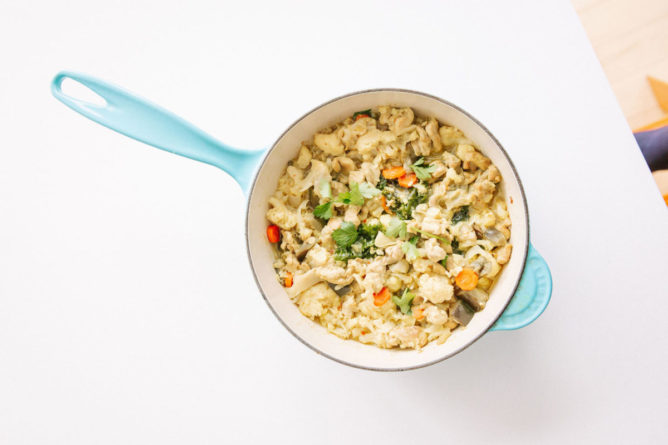
Ceramic cookware is generally safe as a healthy cookware option, but do a little investigating before you purchase. Only choose brands with zero lead content and avoid any ceramics that have a coloured glaze on the inside (this goes for bowls and mugs too) as these colours typically carry toxic chemicals. Some ceramic glazes contain lead, and with use they can wear down over time. Be sure to wash by hand and try not to use them for cooking acidic foods that could damage the glaze.
Price point: Medium.
It’s for you if: You’re not ready to make the leap to enameled cast iron, and you’re prepared to carefully handle your cookware to avoid chipping, this is for you. Once ceramic is chipped, best to turn it into your newest planter.
Pros
- Free of PFTE and PFOA
- Easy to clean
- Non-reactive
- No heavy metals
- Doesn’t leach anything into your food, nor peel
- Conducts heat evenly
- Can be used on the stovetop and in the oven as well as for storage in the fridge or freezer
Cons
- Isn’t non-stick
- Doesn’t work on induction stovetops (because it has no metal)
- Is sensitive to extreme temperature changes (for example, it may crack if you add a frozen item to a hot pan)
- Metal utensils will leave marks on it
- Can be pricy
Brand We Recommend
Option 4: Glass Cookware
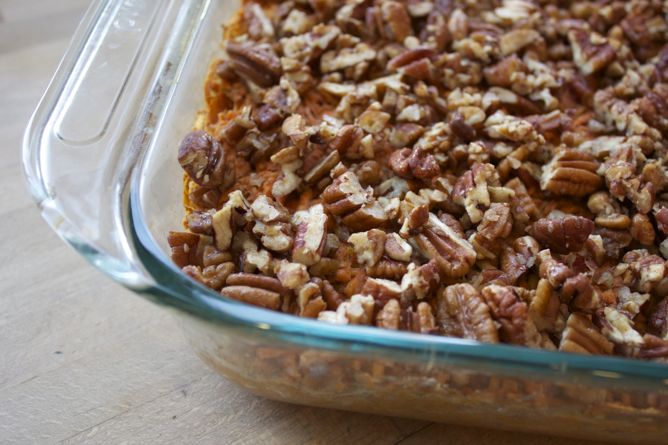
This can be a tough one to find (garage sales and eBay are often your best bet for the old classic solid tempered glass cookware). On the one hand, glass won’t leach any chemicals or metals into your food, but it is heavy and glass is glass, so there is always the possibility of chips, cracks and breaks. There’s also a risk of it, well, exploding. Recent reports have suggested that when Pyrex cookware experiences thermal shock (i.e. going from cold to hot very quickly), there’s a risk of it shattering – so don’t go doing that.
Price point: Low.
It’s for you if: You love watching things cook (glass pots are awesome for teas and soups), are afraid of potential chemicals or are highly sensitive to metals. Just be mindful of how you store these healthy cookware pans to avoid any chipping or cracking.
Pros
- Affordable
- Widely available
- Free of PFTE and PFOA
- Won’t leach chemicals into your food
- Oven and dishwasher safe
Cons
- Can break, chip, or crack
- Is sensitive to temperature changes (which may cause it to shatter)
- Doesn’t retain heat
Brand We Recommend
A Few More Recommendations
After further research and investigation, there are a couple of ceramic brands with safer non-stick coatings to consider:
What About Silicone Bakeware?
Silicone mats, loaf pans, muffin cups, and molds are popular for baking, as are silicone utensils. Here in North America, where the Academy of Culinary Nutrition is located, silicone bakeware is generally recognized as safe up to temperatures of 425 degrees. However, while there isn’t specific evidence that shows silicone is dangerous, there also isn’t evidence that proves it’s safe. For this reason, we recommend only using silicone if you’re not going to heat it. We like to use silicone molds for recipes like chocolate and other no-bake treats, freezing excess herbs in olive oil, freezing nut/seed milk cubes or sauce cubes, etc.
How Many Pots and Pans Do You Need?
Healthy cookware can be an investment if you are equipping an entirely new kitchen or making non-toxic swaps for what you already have. However, in our view, you don’t need to buy pricey 12-piece sets to cook nutritious food. One of the first lessons we teach in the Culinary Nutrition Expert Program is how to set up and organize your kitchen, including how many pots and pans to have.
To cook and eat well, this is what we suggest you start with:
- 1 small pot
- 1 medium to large pot
- 1 skillet/frying pan
The sizes of pots and pans you purchase will depend on how many people you cook for (you may want small sized cookware if you’re cooking for one, and larger pots for families or batch cooking). Other nice-to-haves include a dutch oven or casserole, and a large rectangular or square shallow dish.
Another thing to consider when shopping for cookware is the types of food you like to eat! If you enjoy making soups, stews, and one-pot meals, investing in a few good-sized pots will serve you well. If you like to cook food that involves more pan-frying, opt for a second skillet or frying pan.
If you are working with a tight budget, check out thrift stores for healthy cookware choices – just ensure you check the materials and look into the brand and how they construct their pans to ensure safety. You can also raid kitchens of your family members for healthy cookware they never use!
You’ll use the pots and pans you purchase on a regular basis, whether it’s daily, multiple times a day, or a few times a week. Remember, the quality of healthy cookware options will have a direct impact on your food and your overall health. This means they’re worth the investment and durable pieces can be passed on to generations of friends and family.
* This post contains affiliate links
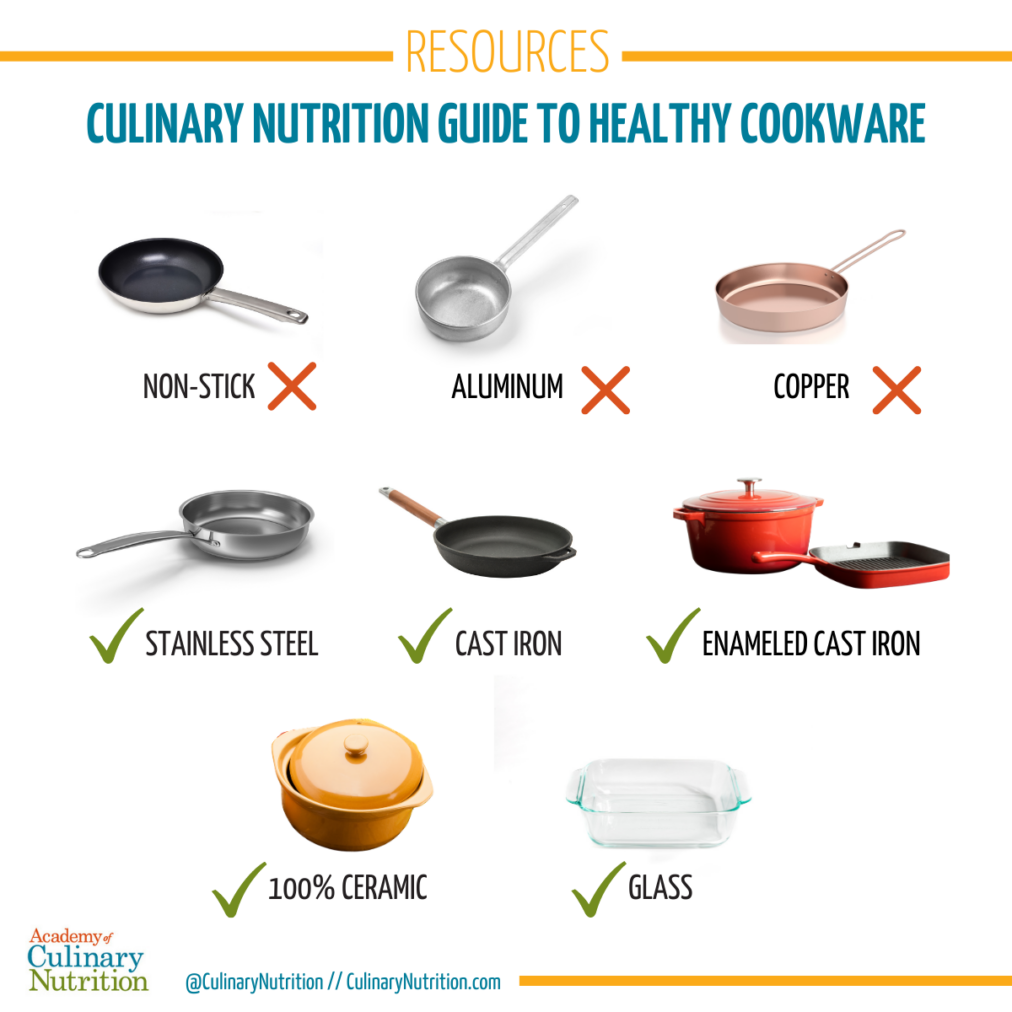
Free Resource Library
Enjoy more than 40 downloadable guides, recipes, and resources.















